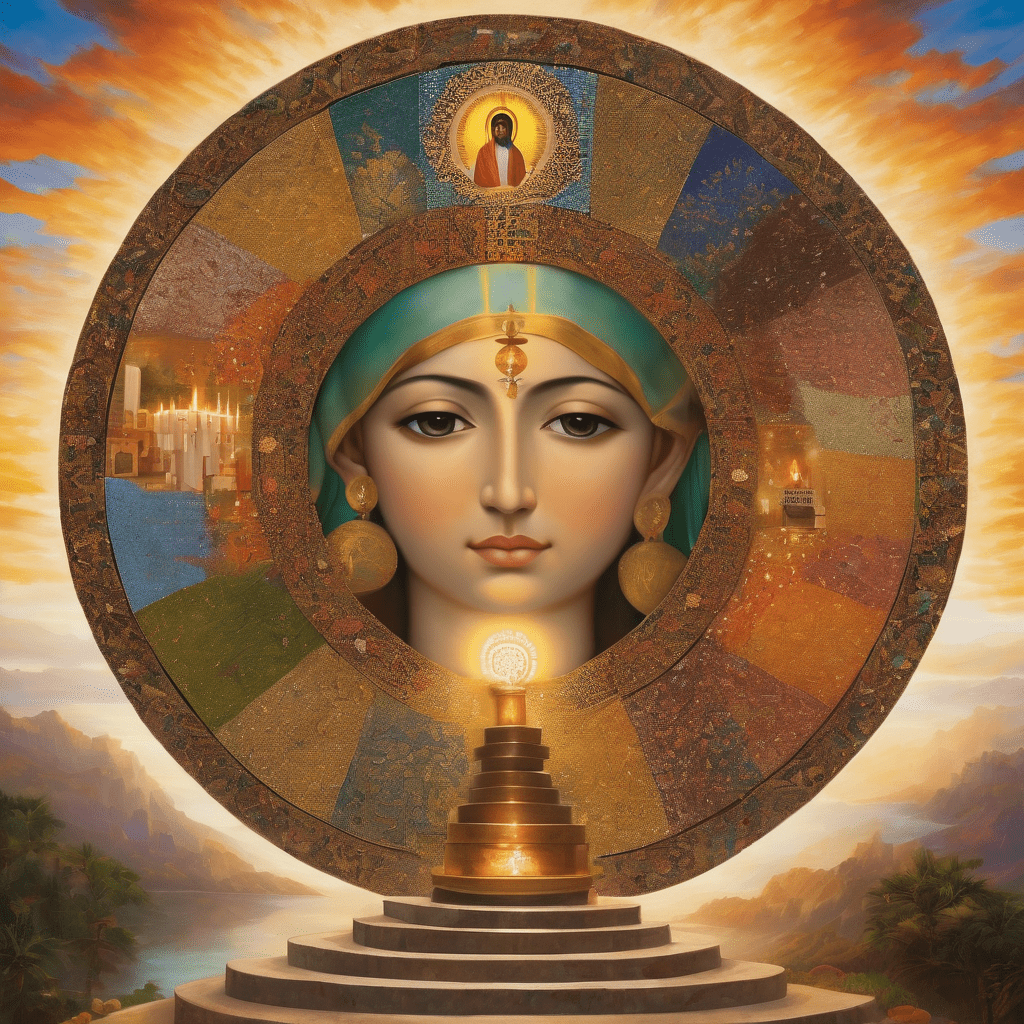True Religion Exploration and Practices

Religion, a profound aspect of human existence, has historically played a pivotal role in shaping cultures, ethics, and individual identities. However, in our exploration of the essence of religion, we must transcend the conventional narratives that often emphasize dogma and division. Instead, let us embark on a journey that seeks unity, embraces diversity, and discovers the deeper, often overlooked, aspects of what constitutes a true religion.

Reimagining True Religion
Moving Beyond Dogma
True religion rejects the shackles of rigid dogma. It encourages believers to question, to explore, and to engage in a dynamic and evolving relationship with the divine. Instead of prescribing fixed beliefs, it invites open-minded inquiry, recognizing that spirituality is a journey that unfolds uniquely for each individual.
Embracing Unity in Diversity
A genuine religion does not sow seeds of division but rather nurtures unity in the midst of diversity. It acknowledges that diverse cultures may express their spiritual journey in distinct ways. Genuine religion fosters an atmosphere where different paths are seen as different routes to the same destination – an interconnectedness that transcends the boundaries of faith.
The Essence of Spirituality
Personal Connection with the Divine
At the heart of true religion lies spirituality – a deeply personal and direct connection with the divine. It transcends the need for external intermediaries, encouraging individuals to cultivate their unique relationship with the sacred. It also recognizes that the divine can be intimately experienced by each seeker.
Seeking Inner Transformation
Spirituality within genuine religion is not about adherence to external rituals but about inner transformation. It is a journey of self-discovery, moral development, and the realization of one’s higher self. The focus is on cultivating virtues and embodying the principles of compassion, kindness, and love.
Mysticism and Esoteric Insights in True Religion
Unveiling Mystical Traditions
True religion frequently harbors mystical traditions, delving into the esoteric dimensions of spirituality. These profound practices go beyond conventional teachings, offering seekers transformative insights into the nature of existence. Mysticism, in particular, invites individuals to experience the divine directly, transcending the limitations of doctrine.
Alchemy of the Soul
Esoteric practices, such as the alchemy of the soul, symbolize the inner transformation required for spiritual evolution. True religion acknowledges the significance of these hidden traditions, understanding that the journey toward enlightenment involves a deep, personal alchemy.
Harmony Between Science and Spirituality in True Religion
Breaking Down Barriers
Rather than viewing science and spirituality as conflicting realms, Genuine religion sees them as harmonious pursuits. It acknowledges that both contribute to a holistic understanding of reality. The interplay between scientific inquiry and spiritual exploration enriches our comprehension of the cosmos.
Quantum Spirituality
In the exploration of true religion, the concept of quantum spirituality emerges, bridging the gap between scientific principles and spiritual concepts. Moreover, this interdisciplinary approach invites believers to see the interconnectedness between the material and metaphysical aspects of existence. By embracing this perspective, individuals can foster a deeper understanding of the profound interplay between science and spirituality.
The Evolution of Moral Consciousness in True Religion
Dynamic Morality
True religion understands that moral principles are not static but evolve with time. It encourages believers to engage in ongoing ethical discussions, adapting moral frameworks to meet the ever-changing challenges of the world.
Compassion and Empathy
A hallmark of true religion is the emphasis on compassion and empathy. Believers are called not only to feel these virtues but to translate them into tangible acts of kindness, service, and social justice. Compassion, in this context, becomes a lived reality.
Beyond Rituals: The Transformative Power of Prayer in True Religion
Prayer as a Catalyst for Change
While rituals are often associated with religion, true religion recognizes prayer as a transformative force. It goes beyond a mere plea for divine intervention and serves as a means to align oneself with divine principles. Prayer becomes a catalyst for positive change in both individuals and communities.
Silent Communion
Silent prayer takes center stage. Furthermore, it provides individuals with a space for inner reflection, fostering a deep, wordless communion with the divine. In the silence, believers often find profound insights and a profound sense of interconnectedness.
Encountering the Divine in Nature in True Religion
Sacred Ecology
This religion recognizes the divine presence in the natural world. Additionally, it encourages a sense of sacred ecology, where believers view the Earth as a manifestation of the divine. Moreover, this perspective fosters environmental stewardship and a deep, spiritual connection with nature.
Nature as a Spiritual Teacher
Nature becomes a spiritual teacher in true religion. Furthermore, its cycles, rhythms, and interconnected web of life offer profound lessons about impermanence, interconnectedness, and the cyclical nature of existence. Additionally, believers are encouraged to learn from and honor the wisdom inherent in the natural world.
The Role of Meditation and Contemplation in True Religion

Meditation as a Path to Inner Wisdom
True religion places significant emphasis on meditation and contemplation. Moreover, these practices serve as gateways to inner wisdom, providing a sacred space for seekers to connect with their true selves and the divine. Additionally, meditation becomes a transformative tool for self-discovery.
Contemplative Silence
Beyond the structured aspects of prayer, contemplative silence holds transformative power in true religion. Additionally, it invites individuals to move beyond words, entering a state of deep communion and receptivity to spiritual insights. In this profound silence, believers often find truths that transcend language.
Universal Truths in Different Religious Traditions
Common Threads in True Religion
True religion acknowledges the presence of universal truths embedded in various religious traditions. It seeks common ground among diverse faiths, fostering mutual respect and understanding. Instead of focusing on differences, believers are encouraged to explore the shared values that bind humanity together.
Interfaith Dialogue in True Religion
Engaging in interfaith dialogue becomes a cornerstone of authentic religion. Not only does it open avenues for shared exploration, but it also promotes unity and dismantles divisive barriers erected by differences in religious practices. Through dialogue, believers discover the richness of diverse perspectives and the shared aspirations that unite them.
The Path of Love and Compassion within True Religion
Love as the Core Tenet
At the core of this religion lies love. It is not a mere sentiment but a dynamic force that propels believers toward a higher understanding of their faith. Love becomes the guiding principle for interactions within the religious community and beyond.
Compassion in Action
Compassion is not confined to a theoretical concept but transforms into tangible acts of kindness and service. Believers are called to embody compassion in their daily lives, becoming agents of positive change in the world.
In the journey of exploring true religion, we uncover a vision that surpasses the superficial aspects often linked with organized faith. Genuine religion invites individuals to transcend rituals, fostering unity amid diversity, and cultivating a personal connection with the divine. Moreover, this transformative journey recognizes the evolving nature of morality, embracing the synergy between science and spirituality. It also uncovers profound wisdom in mystical and esoteric traditions often overshadowed by mainstream discussions.
Ultimately, it calls for a universal path of love, compassion, and understanding, transcending the limitations of dogma and division. This invitation urges believers to embark on a shared journey toward a more interconnected and compassionate world.
Frequently Asked Questions
- Can spirituality exist outside organized religion?
Yes, spirituality is not confined to organized religion. Moreover, it can thrive independently, allowing individuals to explore their unique paths to truth and connection with the divine.
- How does true religion view other faiths?
True Religion acknowledges the universal truths present in various traditions and encourages interfaith dialogue. Furthermore, it seeks common ground, fostering unity and understanding.
- What is the role of science in true religion?
This Religion sees science as a complementary pursuit, recognizing that both science and spirituality contribute to a more comprehensive understanding of reality.
- How does true religion approach moral evolution?
True Religion understands that moral principles evolve over time. Additionally, it encourages ongoing ethical discussions and adaptations to contemporary challenges. This dynamic approach ensures a continual examination and refinement of moral values.
- Is silent prayer more powerful than vocal prayer?
Both forms of prayer have their significance. Silent prayer provides a space for inner reflection and communion, while vocal prayer can serve as a vocalized expression of one’s spiritual yearnings.




One thought on “True Religion Exploration and Practices”